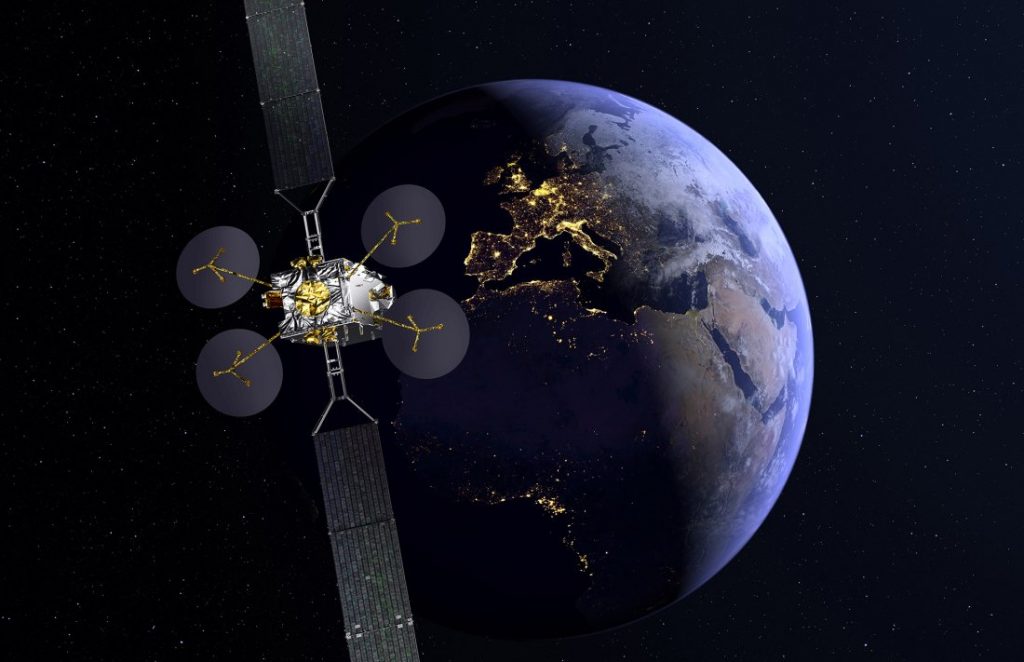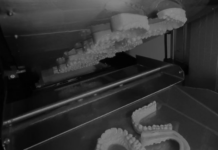Introducing a 3D printed ‘RPA’ sensor
At the core of the team’s redesigned sensor is a laser-cut, five-electrode stack, inside a 3D printed glass-ceramic electrode housing and CNC-machined shroud. The researchers actually explored two different stack designs, one in which all apertures were the same size, and another, where clusters were matched to a single aperture in a ‘floating grid’ formation.
Both were made using a Tethon 3D Bison 1000 system and Vitrolite, a durable pigmented glass capable of withstanding temperatures of up to 800°C, and designed with hexagonally-packed apertures, to maximize the number that could be fitted in. For each RPA design, the aperture size was also optimized via finite element analyses, in an attempt to achieve optimal ion transmission across the device’s grid.
Once ready, the team subjected their prototypes to ion energy distribution simulations and practical testing via electron impact ionizer and helicon plasma testing. In the former, both designs proved able to accurately estimate the average energy of ions, but in practical evaluations the devices showed potential in different application areas.

In practice, the uniform grid design was especially effective at measuring a wide range of plasmas, similar to those that a satellite would ordinarily encounter in orbit. However, the other, featuring a floating grid alignment, proved better-suited to sensing dense and cold plasmas, at an accuracy of just 50 µm, the likes of which are usually only measurable using ultra-precise semiconductor devices.
Given that testing had revealed their devices could “perform on par with the state of the art,” the researchers concluded them to have significant potential as a means of facilitating accessible weather monitoring. Moving forwards, the team even believe that binder jet 3D printing could be used to produce even more of the RPA’s parts, in a way that could reduce its mass and improve its performance.

















































